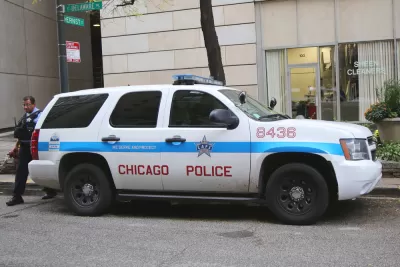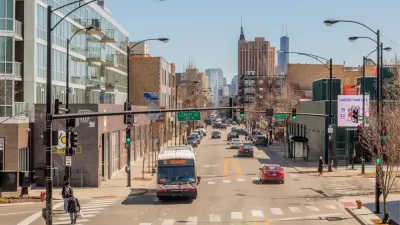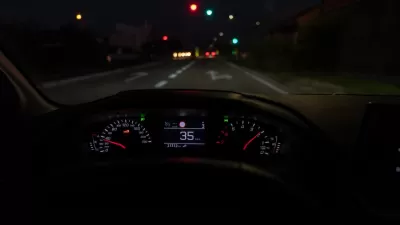Chicago Department of Transportation Chief, Gabe Klein, suggests that crash hot spots should guide efforts to make streets safer.

A recent report from the Chicago Police Department found that 113 people were killed in traffic crashes on the streets of Chicago in 2016. These crashes didn't just happen at random—there are places where crashes happen more frequently and those places don't tend to happen in the richest parts of the city. "A preliminary analysis by the Department of Public Health found that residents facing economic hardship suffer crash fatalities at a rate nearly twice as high as those who don't," John Greenfield writes in The Reader.
This would lead one to think there should be more traffic stops in these communities and, while that may be true, there are problems with that strategy. "These are largely the same lower-income south- and west-side neighborhoods where most shootings take place. But, as the [U.S. Department of Justice] report outlines, these communities are already plagued by police abuses, so there's the potential for an increase in traffic stops to make that problem worse," Greenfield writes.
Former Chicago Department of Transportation official, Gabe Klein, suggests using data on hot spots to create deterrents, to stop accidents before they happen. The National Highway Traffic Safety Administration and the U.S. Department of Justice drafted the "Data-Driven Approaches to Crime and Traffic Safety" report, which, "advises police departments to target these problem areas with highly visible traffic enforcement efforts, such as posting officers at intersections or installing red light or speed cams, to deter various types of crimes," Greenfield writes. Klein and Greenfield speculate that if the city had not faced scandals over its implementation of red light cameras, more of these strategies would have been implemented.
FULL STORY: Ex-CDOT chief: Focusing on crash hot spots could save lives, reduce profiling

Alabama: Trump Terminates Settlements for Black Communities Harmed By Raw Sewage
Trump deemed the landmark civil rights agreement “illegal DEI and environmental justice policy.”

Planetizen Federal Action Tracker
A weekly monitor of how Trump’s orders and actions are impacting planners and planning in America.

The 120 Year Old Tiny Home Villages That Sheltered San Francisco’s Earthquake Refugees
More than a century ago, San Francisco mobilized to house thousands of residents displaced by the 1906 earthquake. Could their strategy offer a model for the present?

Opinion: California’s SB 79 Would Improve Housing Affordability and Transit Access
A proposed bill would legalize transit-oriented development statewide.

Record Temperatures Prompt Push for Environmental Justice Bills
Nevada legislators are proposing laws that would mandate heat mitigation measures to protect residents from the impacts of extreme heat.

Downtown Pittsburgh Set to Gain 1,300 New Housing Units
Pittsburgh’s office buildings, many of which date back to the early 20th century, are prime candidates for conversion to housing.
Urban Design for Planners 1: Software Tools
This six-course series explores essential urban design concepts using open source software and equips planners with the tools they need to participate fully in the urban design process.
Planning for Universal Design
Learn the tools for implementing Universal Design in planning regulations.
Clanton & Associates, Inc.
Jessamine County Fiscal Court
Institute for Housing and Urban Development Studies (IHS)
City of Grandview
Harvard GSD Executive Education
Toledo-Lucas County Plan Commissions
Salt Lake City
NYU Wagner Graduate School of Public Service





























